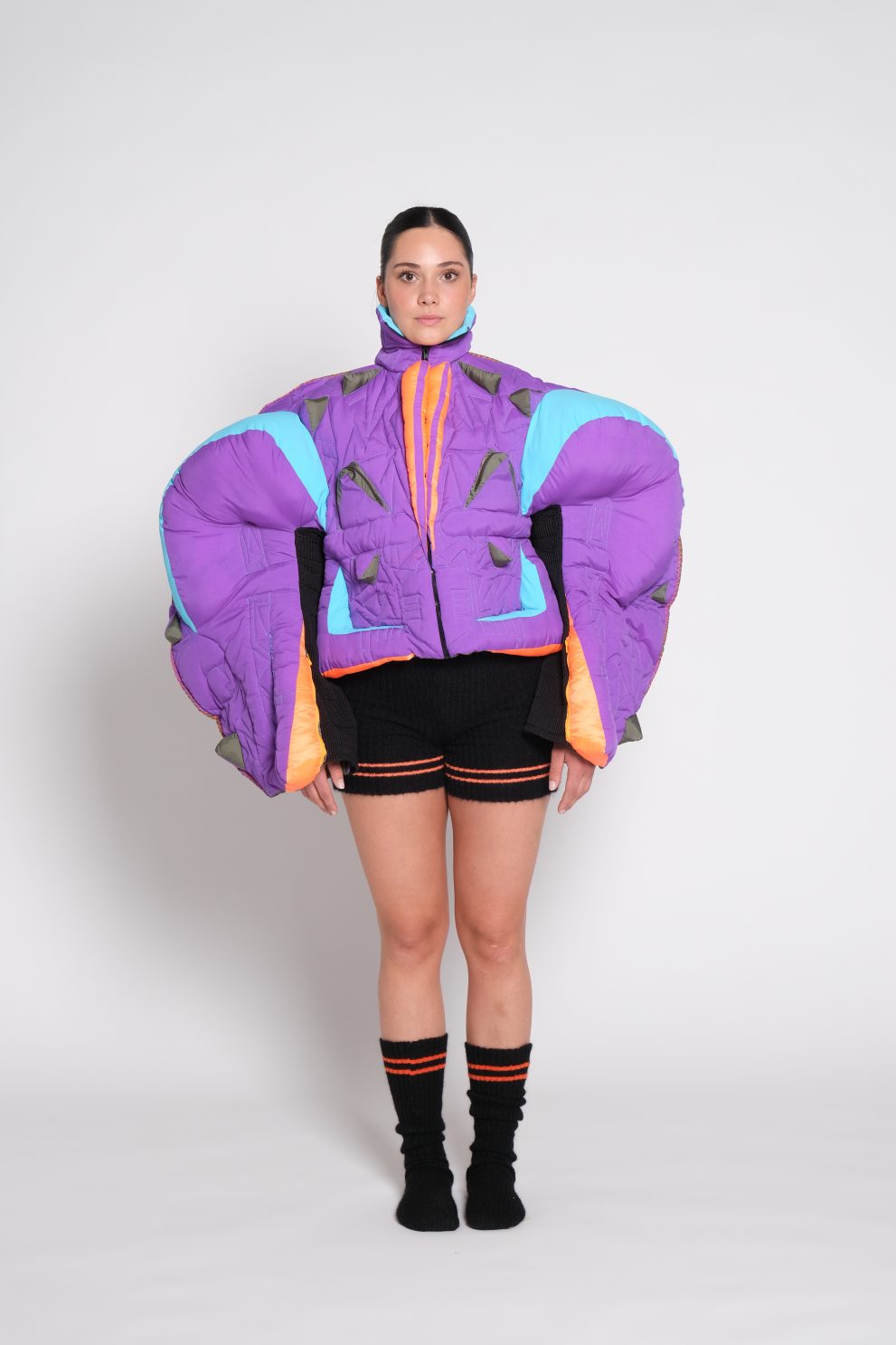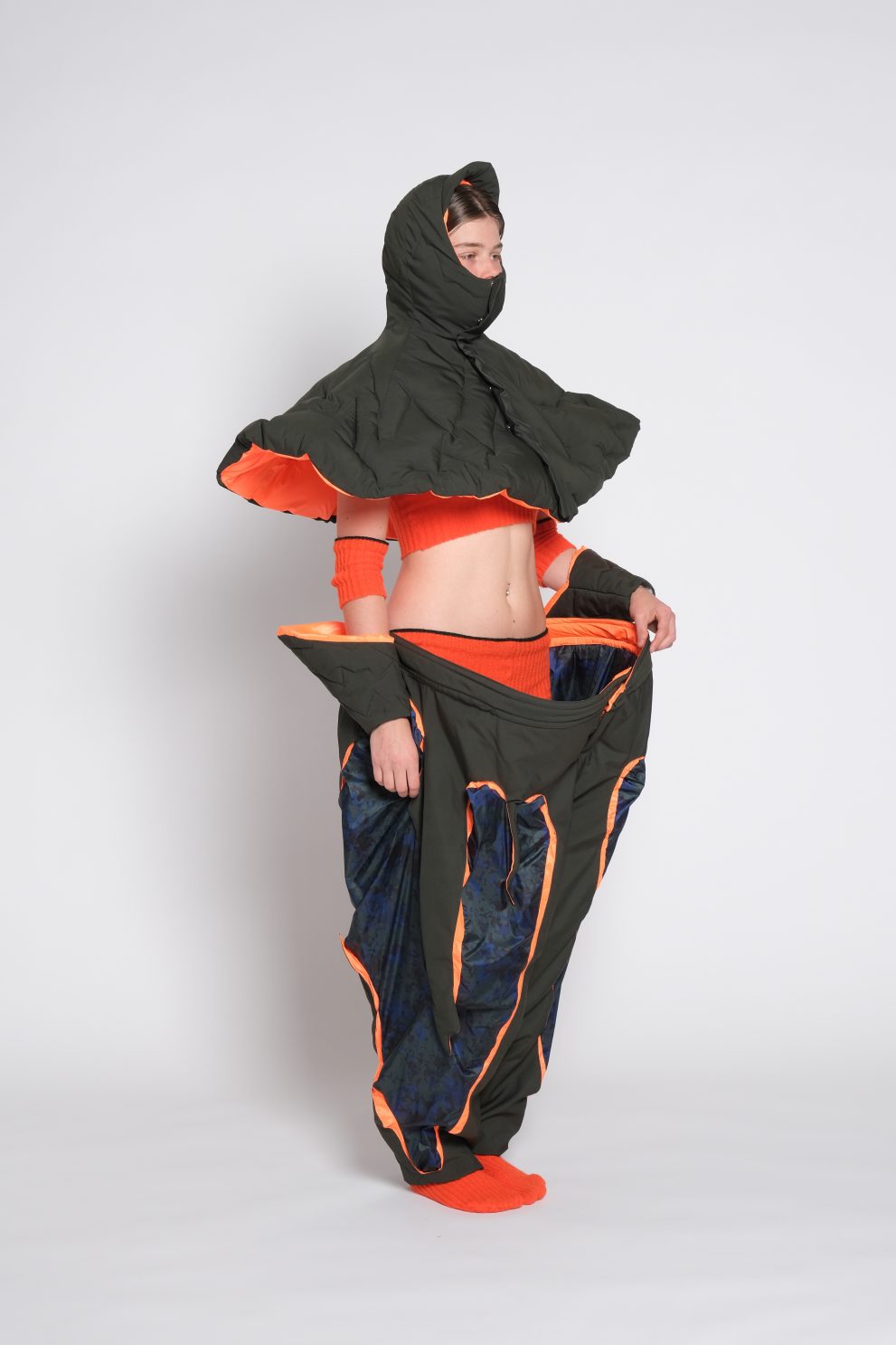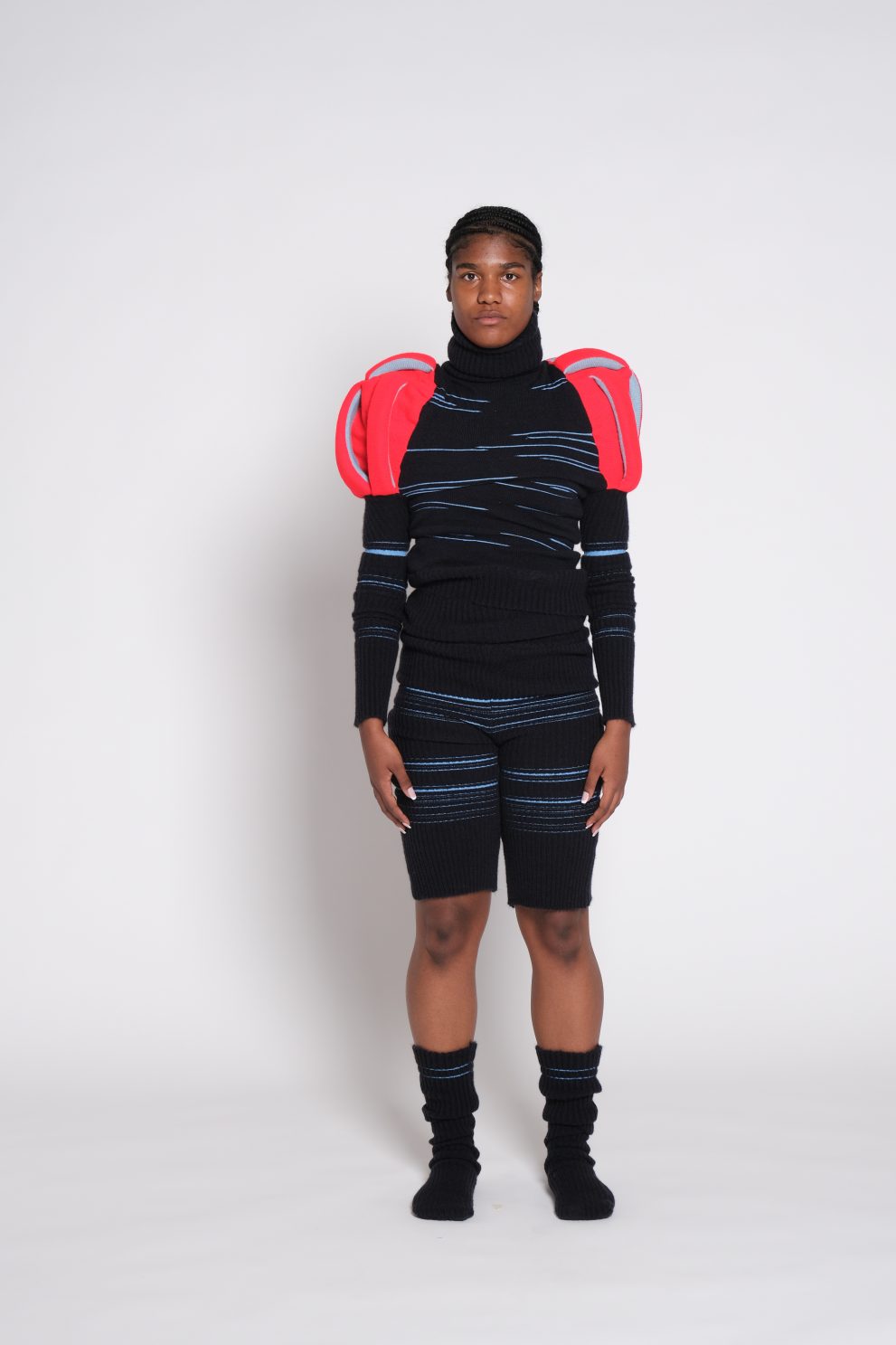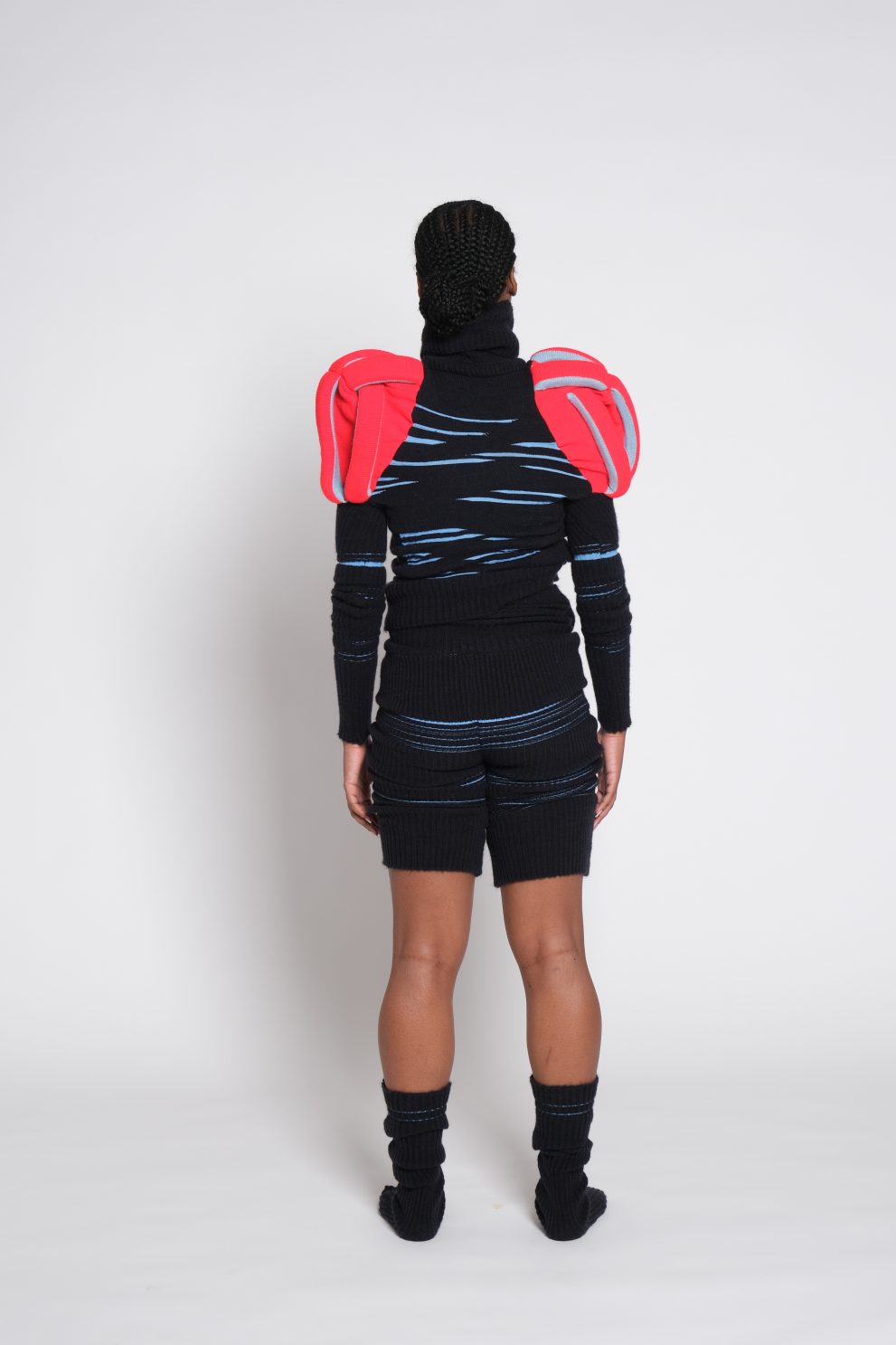“BODY AFFAIRS”
Growing up I never questioned how I should look like, or how others see me as a child.
When I was small I didn’t think about, what kind of clothes I wore, what kind of hairstyle I
had, how my body looks like or what kind of sports I did would influence me some day of
how I would be seen by others. The older I got, the more I realized how all that changed
and how I transformed and got influenced by others. Looking back I recognize how much
these societal factors have changed me and made me feel ashamed of who I am. It changed
me physically and characteristically. Often I tried to fit into a group or a box, to be seen
as normal and behaving appropriately to my gender and other peers. I always had problems with fitting into a group. The way I was dressing was confusing because I loved to
wear overalls, bigger pants and striped shirts. Others wore dresses, skirts, tops and fitted
jeans. I always got told to wear more skirts and dresses because I would look more like a
girl then. My hair was always quite short and other children thought I was a boy, due to the
short hair and the way I dressed but were confused then about my name. After I cut off my
hair when I was sixteen, everyone was shocked and questioned my sexual orientation. It
became so relevant to others how you are supposed to look but there was no specific reason or identity change for me to cut off my hair, but the way you look like was very important to everyone around me. I tried many different kinds of sport, football, ski, firldhockey,
ballet, gymnastics, tennis, judo, fencing and horseback riding. I never stuck with something for a long time besides skiing and horseback riding, even though I liked doing some
of them a lot for example judo. But I was always the only girl between all the boys in the
group, which made me feel alone and ashamed by the fact that I was doing a „boy“ sport.
Even today I get asked why I dress so boyish and not female enough. But what even
is feminine? It still happens to me in France when I enter a shop or grocery store that
I get called “monsieur“ due to my first appearance until I start talking and they apologize and say “madame”. These experiences make me feel vulnerable and uncomfortable in my own body because events like these are always connected to emotions. These experiences change you. After some point I started to change the way
I dressed to try to fit in, inevitably I changed who I am because the way you dress is
a way to express yourself and when that is taken away it stops you from being yourself. It is sad to see that you have to change to be feeling more accepted in societ
Because of my experiences throughout my childhood and still to this day, made me question how the female body image got more relevant to girls and women today and how
societal factors still influences the perceptions of women through our surroundings and the impact of social media. Society tells young girls and women what
the beauty standard is, what is acceptable. But why is it so important to adapt
to these standards and not be who you are? And how can anyone love themselves with all these different influences that keep question of who you are?
My collection is based on two perspectives of the female body image. First, my own
perception of how I feel comfortable in my own body and how I view the female body
and then how female athletes perceive their own body image and in which way they are
seen by society. In my collection I work with different body shapes and muscle growth,
since female athletes bodies are shaped very differently to non athletes. Their muscle
growth is much stronger defined and therefore adds to the body shape. High performance athletes can’t define their own muscles, the sport defines their muscle growth,
which is why female athletes are often seen as masculine. Female athletes are constantly confronted with how the body of a women should look like and how the body of an
athlete should look like. When I was working on my collection, at the beginning I could
only assume how athletes feel and how they view it since I am not a high performance
athlete myself. When I started to look for models for my collection, I had female athletes in mind that could fit into the attitude of my collection. In my search for athletes
I asked them if they would be interested to work with me, I interacted for the first time
with someone that actually experiences what I was assuming. Even if they didn’t had
time to model for me, I asked them if they were confronted with this topic. All of them
knew exactly what I was talking about and told me how they were facing these questions about their femininity and what made them feel empowered in their own body.
Female empowerment. How do women achieve the empowerment of their own body
when the female body is constantly attacked by societal beauty standards? Since the
female body continues to be part of a discussion in society, women need to find their
personal way of facing those beauty standards and achieving self love of their own body.
There are many forms of achieving their own empowerment. This self love can
be accomplished of how we treat our own body. This can be done through
sports, type of lingerie, body hair growth and the appearance through clothes.
The female body involves a big part in the female empowerment. How our bodies are
shaped and built. We can define until a certain point how the body is shaped, but not the
skin of our body. A lot of women struggle with body stretch marks. Any body type can
have them. They can appear when a part of the body for example stretches the skin too
fast. They have a negative connotation and are seen as ugly, but they show what our bodies can do and how the body supports us. It is a natural reaction to how we treat our body.
During pregnancies they appear around the belly, since the skin stretches to make space for a new life that grows in the women’s body.
Motherhood and pregnancies play a big role in the life of women. It is very natural and beautiful to be able to create a new life, but it is for some women a big obstacle and struggle, especially for athletes. Becoming a mother as an athlete is a „crazy
dream“ as Allyson Felix said in an Interview for The New York Times. Allyson Felix is
one of Nike’s most widely marketed athlete and six-time olympian winner and 11th time
world champion. She was one of the first athletes to fight for maternity leave in the
sports industry. Becoming a mother is a kiss of death in this field because once they
leave and stop the training they risk pay cuts from sponsors during their pregnancies
and afterwards. It’s one example of a sports industry where the rules are still mostly made for and by men. That is why many female athletes still train and compete until birth and come back right after or motherhood isn’t even an option for them if they
want to aspire a high career as an athlete. It is disappointing to see that motherhood
and having a career is still so unimaginable and impossible for so many women today.
The Looks in my collection embody these two perspectives. The influence of my own identity and the perception of athletes. Their experiences and the problematics of what it means to be a women.
I visually recreated the difficulty of being a woman and an athlete by enhancing the shape of the shoulders, legs and hips, while using mostly graphics to shape the different body parts. Showing the contrast between voluminous shapes and the body and how they relate to one another. The shapes I
created are minimal in its shape but become strong through the colors and graphics.
As I already mentioned above I was trying to include the different struggles of athletes and womanhood in each of my looks. Each look is telling its own story.
My graphics and prints are based on 80s ski images and ski style poses, which I combined with the garment form to underline the structure.
My collection plays with the attitude and the surroundings of my garments. If
the person wearing it, is not an athlete, the garments turn her into one. The choreography gives the attitude. If the garment is shown in the right surrounding it sets the tone and it is clear what the function of the garment represents.
The relation women have with their own body is very intimate and conflicting sometimes. It is still not part of an openminded nonjudgemental discussion where women
feel free to express themselves and talk about their individual struggles and problems
openly. I feel it is important to create a space where everyone can be part of and express themselves freely and where we empower others around us. With my collection I
tried to create a space where female issues are represented and stories are being told.




















